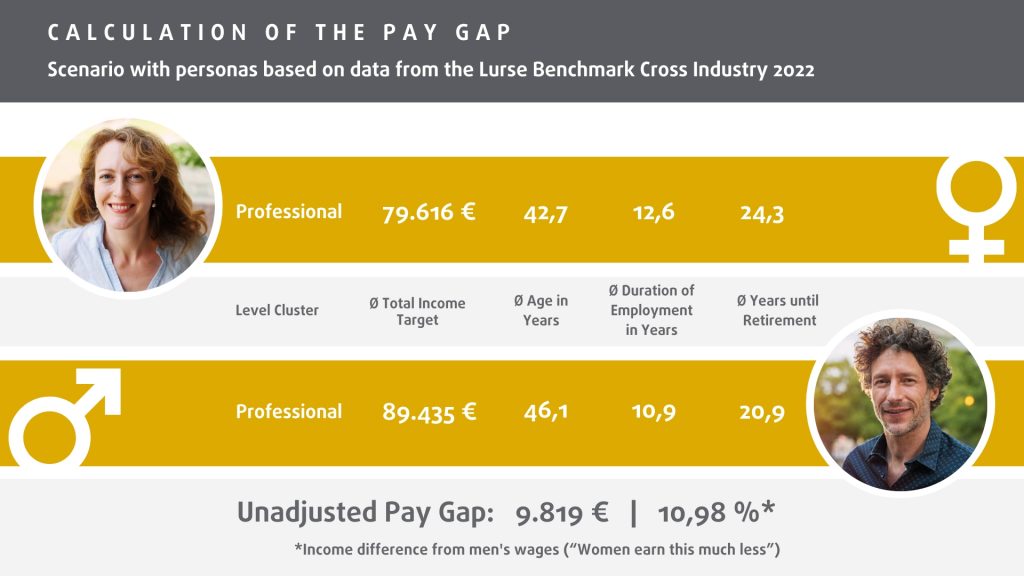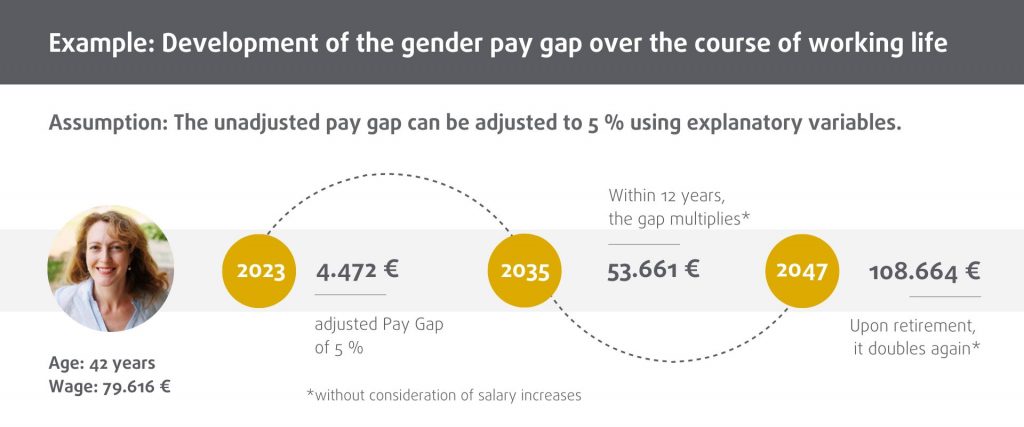Lurse Pay Equity Analysis and Certification
Who wants to be perceived as a fair and attractive employer – in times of the “war for talents” absolutely critical for the success of all companies – has to pay their employees fairly. Hardly anything demotivates employees more than (perceived) unfairness in pay. It is more important than ever to check whether pay is fair in your own company and, if not, how this can be achieved.
Do you know how your company is doing in terms of pay equity? Our Team of Experts make it simple and straightforward for you to get started on this topic and accompany you every step of the way:
With our pay equity analysis, we don’t rely on a uniform software solution, but tailor it specifically to your company. In doing so, we not only identify gender-specific differences, but also take into account other variables, such as the age and nationality of employees.
The analysis and interpretation of the data is followed by a results report that identifies structural wage inequalities in detail. On this basis, Lurse can make concrete recommendations for action that will help the company achieve greater pay equity and also support you in internal company communication. Beyond the discrimination exclusion, the elaboration contains recommendations for working through identified inequalities in the company.
At the end of the analysis is Lurse’s own certification: all companies that are below the tolerance threshold of 5 percent can secure a Pay Equity Seal, valid for two years from the date of issue.
In June 2023, a new EU directive aimed at reducing the gender pay gap came into force. It provides for binding measures on pay transparency and makes it easier for those affected to go to court, for example by shifting the burden of proof in favor of employees. Among other things, reporting on the gender pay gap will also become mandatory: employers with at least 100 employees are to publish information on the pay gap between female and male employees. The frequency of reporting and the due date of the first report will depend on the size of the company. For example, the first obligatory data report for companies with more than 250 employees is due in 2027, for the 2026 reporting year. You can read more about the planned wage transparency measures here.
If you want to be perceived as a fair and attractive employer, you shouldn’t wait to react to new legislation. Assessing whether there is pay equity in your own company and how it can be established, if it is not, is a matter of corporate hygiene.
As element of the analysis, Lurse uses personal data to determine the adjusted pay gap. In other words, the part of the wage gap between two comparison groups that is not attributable to explainable and justifiable differences is calculated. If the adjusted pay gap is above the tolerance threshold of 5 percent, this is considered discriminatory according to EU standards.
Personal data collected at your company can add value to the calculation of the adjusted pay gap. Such data may include value/job level, goal achievement, performance appraisal, length of service, age, nationality, or job family. The more objective and gender-neutral factors can be included, the more meaningful the result.
We assess the relevance of the data as part of the analysis.

Our Experts for you:





